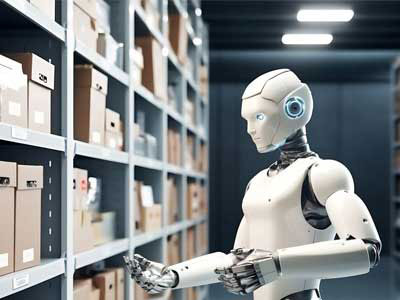Key Takeaway
Yes, robots are safe to use if designed and maintained properly. Modern robots follow strict safety standards to avoid injuries and reduce errors. They are equipped with sensors and advanced control systems to ensure safe interactions with humans. Collaborative robots (cobots) work alongside humans safely, thanks to their ability to detect and respond to human presence. Regular maintenance and adherence to safety protocols further enhance robot safety. By following these measures, robots significantly improve workplace safety and efficiency.
Safety Standards and Regulations
Safety standards and regulations are crucial in industrial applications, ensuring workplace safety and compliance. Adhering to standards like ISO 13849 and IEC 61508 is essential for the proper functioning of safety equipment like light curtains and sensors. These regulations govern aspects such as installation, maintenance, and testing, ensuring optimal performance and minimizing risks. Compliance not only enhances operational safety but also boosts overall productivity by maintaining a secure working environment. Understanding and implementing these standards are integral to ensuring the safety and well-being of personnel in industrial settings.

Built-In Safety Features
Modern robots are equipped with advanced safety features designed to protect workers in industrial environments. These features include sensors and vision systems that detect human presence and prevent collisions. For instance, proximity sensors can halt the robot’s movement if a person enters a defined safety zone, ensuring that no accidents occur. Light curtains and safety mats are also common, providing physical barriers and triggering shutdowns if breached. These mechanisms are crucial in maintaining a safe workspace.
Robots also incorporate fail-safe mechanisms that ensure they operate safely even if a component fails. Redundant systems and fault detection algorithms continuously monitor the robot’s performance, immediately identifying and addressing potential issues. These built-in safety features are essential for preventing accidents and ensuring the smooth, safe operation of robotic systems in industrial applications. The combination of these technologies creates a robust safety net, allowing robots to function efficiently without compromising worker safety. Ensuring these features are in place and regularly maintained is vital for any industry employing robotic systems.
Risk Assessment and Mitigation
Conducting thorough risk assessments is vital before deploying any robotic system in industrial applications. This process involves identifying potential hazards and evaluating the risks associated with each task the robot will perform. By understanding these risks, engineers can develop strategies to mitigate them effectively, ensuring the safety of both workers and equipment. Risk assessment is not a one-time task but a continuous process that needs regular updates.
Risk mitigation may involve redesigning the robot’s working environment to minimize hazards, implementing additional safety measures, or modifying the robot’s tasks to reduce risk. Continuous monitoring and reassessment are also crucial, as new risks can emerge over time. By proactively managing risks, industries can ensure that robotic systems operate safely and efficiently, protecting both workers and equipment. This proactive approach not only enhances safety but also contributes to the overall efficiency and productivity of industrial operations.
Training and Education
Proper training and education are essential for ensuring the safe use of robots in industrial applications. Workers must understand how to operate robotic systems, recognize potential hazards, and respond to emergencies. Training programs should cover the basics of robot operation, safety protocols, and maintenance procedures, providing a solid foundation for safe robot interaction. Without proper training, even the most advanced safety features can be ineffective.
Continuous education is also important as technology evolves. Regular training updates ensure that workers stay informed about new safety features and best practices. Providing hands-on experience with robotic systems helps workers gain confidence and competence, further enhancing safety. By prioritizing training and education, industries can foster a safety-conscious culture and reduce the risk of accidents. This commitment to continuous learning is essential for keeping pace with technological advancements and maintaining a safe working environment.
Collaborative Robot Safety
Collaborative robots, or cobots, are designed to work alongside humans, enhancing productivity and safety in industrial environments. These robots are equipped with advanced safety features that allow them to operate safely in close proximity to workers. For instance, cobots can adjust their speed and force based on the task and the presence of human workers, minimizing the risk of accidents. Their design inherently prioritizes safety.
Cobots are designed to be inherently safe, with rounded edges and soft surfaces to minimize injury risk. Additionally, they are programmed to perform tasks that complement human activities, reducing the need for workers to perform hazardous or repetitive tasks. By leveraging the capabilities of collaborative robots, industries can create safer and more efficient working environments. The integration of cobots into industrial applications represents a significant advancement in workplace safety, demonstrating how technology can be harnessed to protect workers while improving productivity.
Conclusion
To ensure robot safety, meticulous planning and adherence to safety protocols are paramount. Start by conducting thorough risk assessments and implementing appropriate safety measures like safety light curtains and emergency stop buttons. Regular training for personnel on safe operating procedures is crucial. Additionally, maintaining and inspecting safety equipment regularly ensures optimal performance. By prioritizing these steps, workplaces can effectively mitigate risks associated with industrial robots, fostering a safer environment for all personnel involved.
